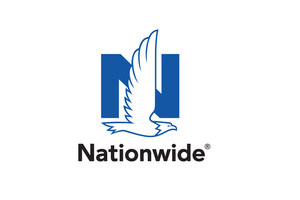COLUMBUS, Ohio, Sept. 19, 2016 /PRNewswire/ -- House prices nationally have risen significantly since the mortgage crisis, but "healthy fundamentals" in the majority of local housing markets signify that another housing bubble isn't imminent, according to a forward-looking housing barometer released today by Nationwide.
Today's housing market remains positive and in stark contrast to the conditions during the housing bubble when more than three-fourths of metro areas flashed warning signs at least two years before the bubble popped, according to Nationwide's Health of Housing Markets Report (HoHM Report). The latest HoHM Report finds that continued job growth, increasing incomes and record low mortgage rates across the U.S. are keeping housing affordable. Additionally, modestly tight mortgage underwriting criteria and a decided lack of overbuilding should support housing markets in the year ahead. The report also shows that there are a handful of regional markets where house prices are more than 20 percent above their pre-crash peaks.
"Home prices reaching or even passing their pre-crash highs of a decade ago does not signal a bubble in the near future," said David Berson, Nationwide senior vice president and chief economist. "Even with record-high prices in some markets, housing remains relatively affordable, and we are not concerned about a national bubble."
Berson noted that only 7.1 percent of homeowners remain underwater on their mortgages and housing market metrics across the board remain healthy. "We're optimistic that the housing market will continue to boost the U.S. economy," he said.
The quarterly report evaluates the housing health for the U.S. and 400 metropolitan statistical areas. Overall, it indicates that the vast majority of local housing markets will experience sustainable housing activity during the next year with little chance of substantial downturns.
Incomes in six markets across the country, however, are not keeping pace with sharply rising home prices. They are Dallas, Houston and Austin, Texas; Denver, Colo.; and San Francisco and San Jose, Calif. Meanwhile, home prices in several metro areas that experienced the biggest increases in the housing boom remain more than 20 percent below their peak. They include Bakersfield and Fresno, Calif.; Las Vegas, Nev.; Orlando, Fla.; and Tucson and Phoenix, Ariz.
The report also found that:
- While more than half of metro areas are still below their peak home prices of a decade ago, about 150 areas set all-time price peaks already in 2016. Housing trends driving the overall market suggest that national home prices should surpass their previous peak in coming years.
- The energy sector slowdown weighs heavily on job growth and housing sustainability in Louisiana, North Dakota, Texas and Wyoming, placing metro areas in those states among the bottom 10 states on the index for the second consecutive quarter. Many of them have been at the bottom for the past year.
- Major MSAs among the top 50 include Baltimore, Cincinnati, Detroit and Jacksonville; meanwhile, three of the 40 largest MSAs remain concerning, just outside of the bottom 10: Houston, Seattle, and New Orleans.
The 10 top metro areas in the index, which reflects the health of housing, are, in order, Fayetteville-Springdale, Ark.-Mo.; Saginaw, Mich.; Valdosta, Ga.; Cumberland, Md.-W.Va.; Jackson, Tenn.; New Bern, N.C.; Buffalo-Niagara Falls, N.Y.; Niles-Benton Harbor, Mich.; Durham-Chapel Hill, N.C.; and Manhattan, Kan.
Five of the bottom 10 metro areas are in Texas. In order, they are Bismarck, N.D.; Midland, Texas; Casper, Wyo.; Houma-Thibodaux, La.; Lafayette, La.; College Station-Bryan, Texas; Odessa, Texas; Dallas-Plano-Irving, Texas; Hammond, La. and Victoria, Texas.
Showing the most improvement in the past year, in order, are New Bern, N.C.; Saginaw, Mich.; Valdosta, Ga.; Goldsboro, N.C.; Watertown-Fort Drum; N.Y.; Beckley, W.Va.; Las Cruces, N.M.; Dutchess County, N.Y.; Charleston, W.Va. and Jackson, Tenn.
Weakening the most in the past year, in order, are Bismarck, N.D.; Owensboro, Ky.; Midland, Texas; Auburn-Opelika, Alaska; Anchorage, Alaska; Casper, Wyo.; Peoria, Ill.; College Station-Bryan, Texas; Tulsa, Okla. and Wenatchee, Wash.
More information about the HoHM Report, including the methodology used, can be found at www.inthenation.com/housing. The HoHM Report is released on a quarterly basis online and in print.
About Nationwide
Nationwide, a Fortune 100 company based in Columbus, Ohio, is one of the largest and strongest diversified insurance and financial services organizations in the U.S. and is rated A+ by both A.M. Best and Standard & Poor's. The company provides a full range of insurance and financial services, including auto, commercial, homeowners, farm and life insurance; public and private sector retirement plans, annuities and mutual funds; banking and mortgages; pet, motorcycle and boat insurance. For more information, visit www.nationwide.com.
Nationwide, Nationwide is on your side and the Nationwide N and Eagle are service marks of Nationwide Mutual Insurance Company.
NFN-0847AO
Contact:
Jeff Whetzel
(614) 249-6354
[email protected]
Haley Fry
(312) 552-1133
[email protected]
Logo - http://photos.prnewswire.com/prnh/20160106/319751LOGO
SOURCE Nationwide
Related Links
WANT YOUR COMPANY'S NEWS FEATURED ON PRNEWSWIRE.COM?
Newsrooms &
Influencers
Digital Media
Outlets
Journalists
Opted In





Share this article